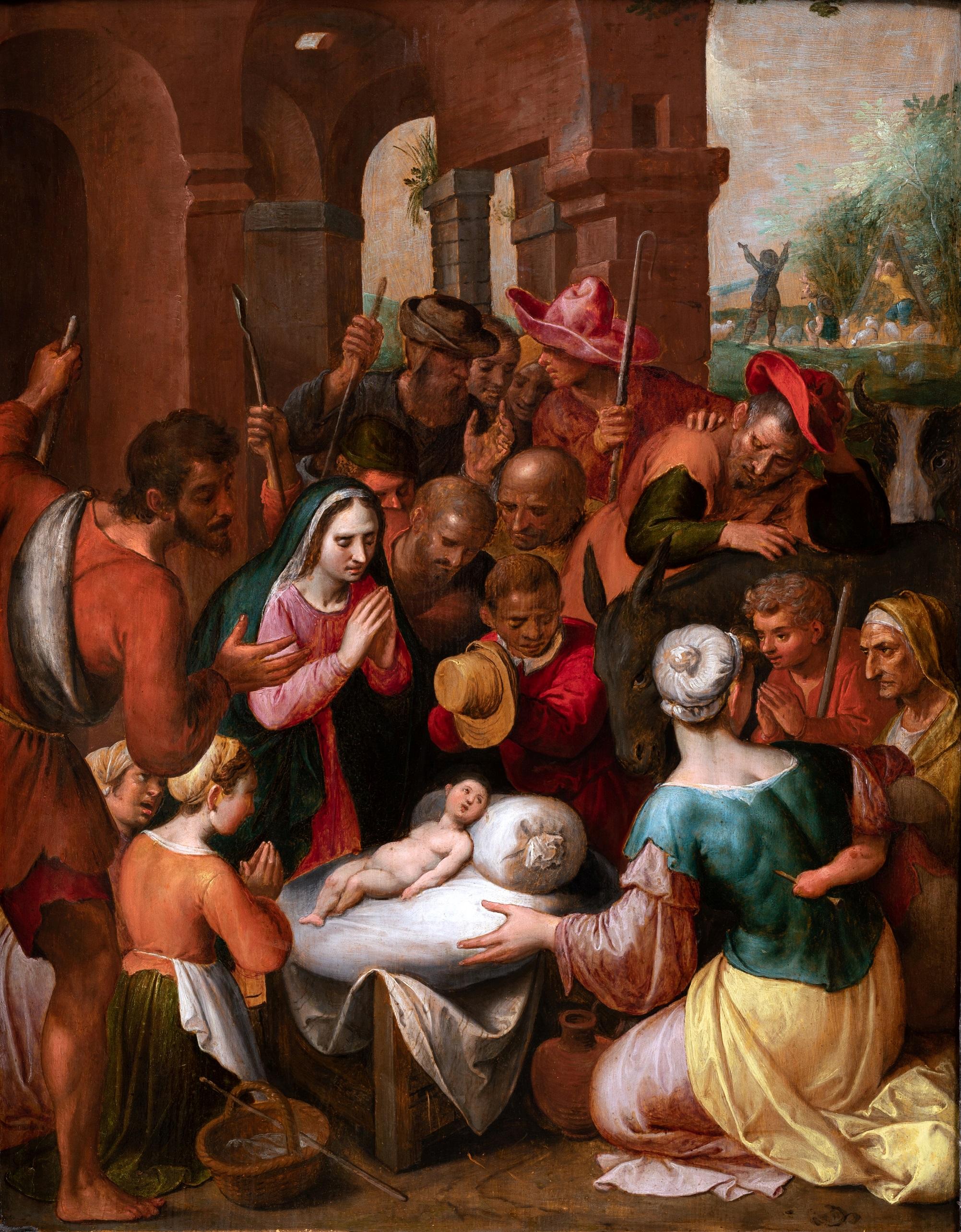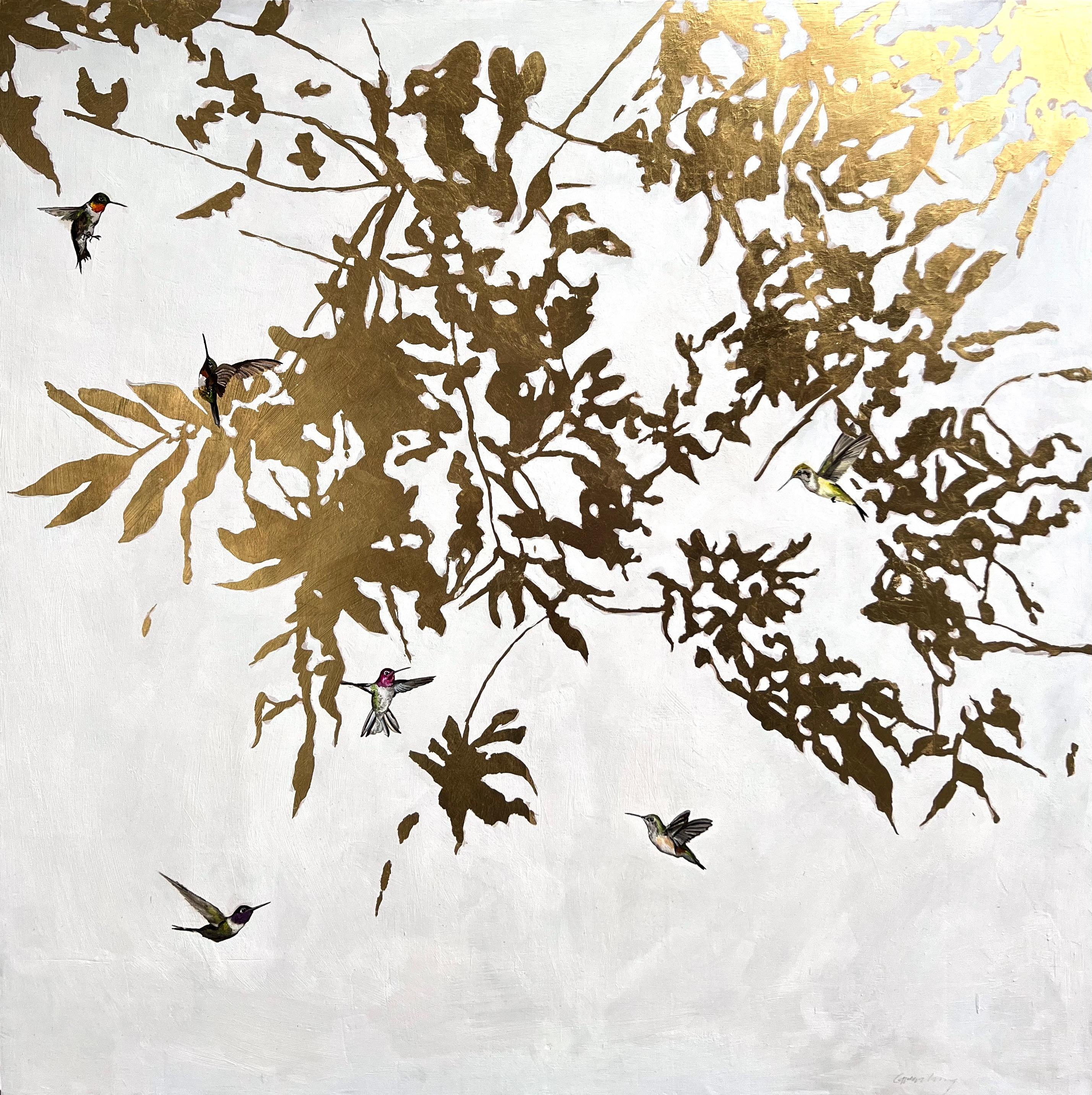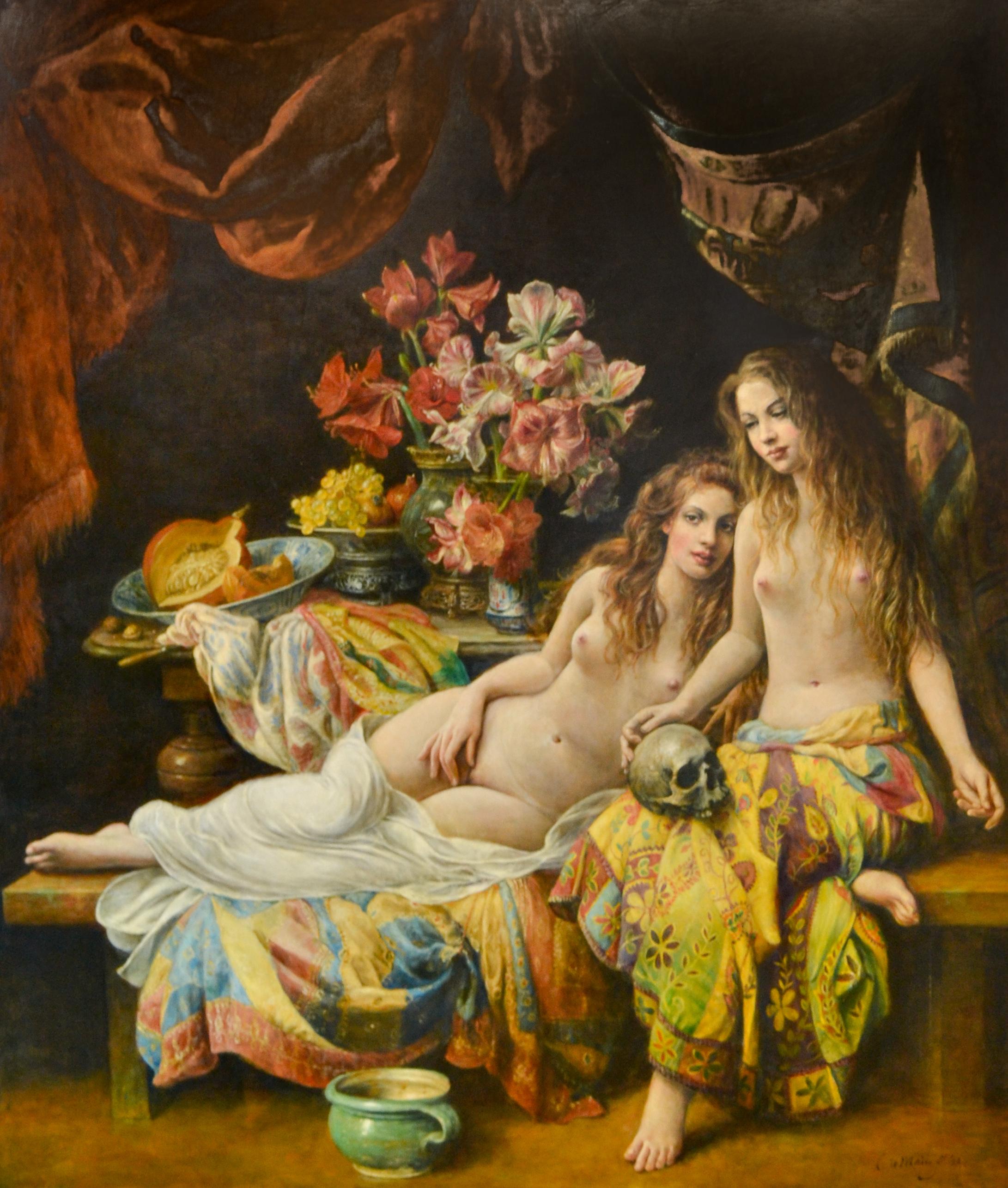Harry Humphrey MooreJapanese Girl Promenading1881
1881
About the Item
- Creator:Harry Humphrey Moore (1844 - 1926, American)
- Creation Year:1881
- Dimensions:Height: 10.9 in (27.69 cm)Width: 6.25 in (15.88 cm)
- Medium:
- Period:
- Condition:
- Gallery Location:New York, NY
- Reference Number:
Harry Humphrey Moore
Born deaf in New York City, Harry Humphrey Moore was a student of Thomas Eakins when attending a school for the deaf in Philadelphia. Eakins recommended he study at École des Beaux-Arts in Paris where he became a student of Jean-Léon Gérôme.
Completing his studies in 1869, Moore traveled in Spain with Eakins, and he was so impressed by the landscape that he stayed several years. In 1872, he married and moved to Morocco and also went to Japan, having been encouraged by the artist Robert Blum.
Moore’s reputation was established by his interest in Oriental subject matter — along with William Heine, Edward Kern and Winckworth Allan Gay, Moore was one of the first American artists to visit Japan. There he created about sixty paintings of Oriental subject matter including temples, gardens and Geisha girls.
Throughout his life, Moore was a world traveler, spending much of his time in Paris, but returned to America to spend time in San Francisco between 1864 and 1907.
Find original Harry Humphrey Moore paintings and other art on 1stDibs.
- ShippingRetrieving quote...Ships From: New York, NY
- Return PolicyThis item cannot be returned.
- Japanese Children with TortoiseBy Harry Humphrey MooreLocated in New York, NYHarry Humphrey Moore led a cosmopolitan lifestyle, dividing his time between Europe, New York City, and California. This globe-trotting painter was also active in Morocco, and most importantly, he was among the first generation of American artists to live and work in Japan, where he depicted temples, tombs, gardens, merchants, children, and Geisha girls. Praised by fellow painters such as Thomas Eakins, John Singer Sargent, and Jean-Léon Gérôme, Moore’s fame was attributed to his exotic subject matter, as well as to the “brilliant coloring, delicate brush work [sic] and the always present depth of feeling” that characterized his work (Eugene A. Hajdel, Harry H. Moore, American 19th Century: Collection of Information on Harry Humphrey Moore, 19th Century Artist, Based on His Scrap Book and Other Data [Jersey City, New Jersey: privately published, 1950], p. 8). Born in New York City, Moore was the son of Captain George Humphrey, an affluent shipbuilder, and a descendant of the English painter, Ozias Humphrey (1742–1810). He became deaf at age three, and later went to special schools where he learned lip-reading and sign language. After developing an interest in art as a young boy, Moore studied painting with the portraitist Samuel Waugh in Philadelphia, where he met and became friendly with Eakins. He also received instruction from the painter Louis Bail in New Haven, Connecticut. In 1864, Moore attended classes at the Mark Hopkins Institute in San Francisco, and until 1907, he would visit the “City by the Bay” regularly. In 1865, Moore went to Europe, spending time in Munich before traveling to Paris, where, in October 1866, he resumed his formal training in Gérôme’s atelier, drawing inspiration from his teacher’s emphasis on authentic detail and his taste for picturesque genre subjects. There, Moore worked alongside Eakins, who had mastered sign language in order to communicate with his friend. In March 1867, Moore enrolled at the prestigious École des Beaux-Arts, honing his drawing skills under the tutelage of Adolphe...Category
Late 19th Century Figurative Paintings
MaterialsOil, Wood Panel
- John F. Kennedy International AirportBy Marc TrujilloLocated in New York, NYEvery detail in Trujillo’s fast-paced, consumer-driven environments is the result of slow painting, of careful and keen observation, both analytic and synthetic. Trujillo depicts his...Category
2010s Contemporary Interior Paintings
MaterialsOil, Panel
- Tumbling into LightBy Angela FraleighLocated in New York, NYSigned and dated (on verso): Angela Fraleigh 2021Category
2010s Contemporary Figurative Paintings
MaterialsCanvas, Oil, Panel
- Wait For Me ThereBy Angela FraleighLocated in New York, NYSigned and dated (on verso): Angela Fraleigh 2021Category
2010s Contemporary Figurative Paintings
MaterialsCanvas, Oil, Panel
- Silent SparksBy Angela FraleighLocated in New York, NYSigned and dated (on verso): Angela Fraleigh 2021Category
2010s Contemporary Figurative Paintings
MaterialsCanvas, Oil, Panel
- The Japanese CornerBy Elliott DaingerfieldLocated in New York, NYA child of the American South, Elliott Daingerfield was born in Harper’s Ferry, Virginia, and raised in Fayetteville, North Carolina, where his father, C...Category
19th Century American Impressionist Interior Paintings
MaterialsCanvas, Oil
- Cercle of Ambrosius Francken, Adoration of the shepherds, 17th century AntwerpLocated in PARIS, FRAdoration of the shepherds, Cercle of Ambrosius Francken, Early 17th century Antwerp school Oil on oak panel: h. 55 cm, w. 43 cm (21.65 in x 16.93 in) 17th c. ebonized and moulded f...Category
Early 17th Century Old Masters Figurative Paintings
MaterialsOil, Wood Panel
- Come TogetherLocated in Atlanta, GAGwen Wong's work is both painterly and allegorical, caught somewhere in the middle between the representational painter and the narrator. "I am inspired by t...Category
2010s Contemporary Figurative Paintings
MaterialsGold Leaf
- Still-Life with Red-White Canvas - 21st Century Contemporary Oil PaintingBy Henk HelmantelLocated in Nuenen, Noord BrabantHenk Helmantel probably does not need an introduction to a lot of worldwide art lovers. After all, the artist from Westeremden even has its own museum. ...Category
2010s Contemporary Interior Paintings
MaterialsWood Panel, Oil
- Two nude woman sitting on their sofa- 21st Century Contemporary Oil PaintingBy Cornelis Le MairLocated in Nuenen, Noord BrabantCornelis le Mair (Eindhoven, July 3rd 1944) is a Dutch painter. This Romantic painter is famous because of his 17th century paintings. As a child, Le Mair already developed a talen...Category
2010s Contemporary Nude Paintings
MaterialsWood Panel, Oil
- Coral GardensBy Nansi Bielanski Gallup and David C. GallupLocated in Palm Desert, CA“Coral Gardens” is an interpretation of the experience we had in the Great Lagoon of Rangiroa, a pristine and tranquil spot in the South Pacific. To catch a sense of motion and flick...Category
21st Century and Contemporary Contemporary Figurative Paintings
MaterialsOil, Wood Panel, Wood
- A Place in the SkyLocated in Atlanta, GAGwen Wong's work is both painterly and allegorical, caught somewhere in the middle between the representational painter and the narrator. "I am inspired by the idea of a childhood re...Category
2010s Contemporary Figurative Paintings
MaterialsGold Leaf
Recently Viewed
View AllRead More
With Works Like ‘Yours Truly,’ Arthur Dove Pioneered Abstract Art in America
New York gallery Hirschl & Adler is exhibiting the bold composition by Dove — who’s hailed as the first American abstract painter — at this year’s Winter Show.
Remarkably, Elizabeth Turk’s Sculptures Highlight the Lost Voices of Extinct Birds
In one of the first live and in-person exhibitions at a Manhattan gallery since last spring, the California-based sculptor gives the lost voices of endangered and extinct birds and animals a magnificent embodied form.





